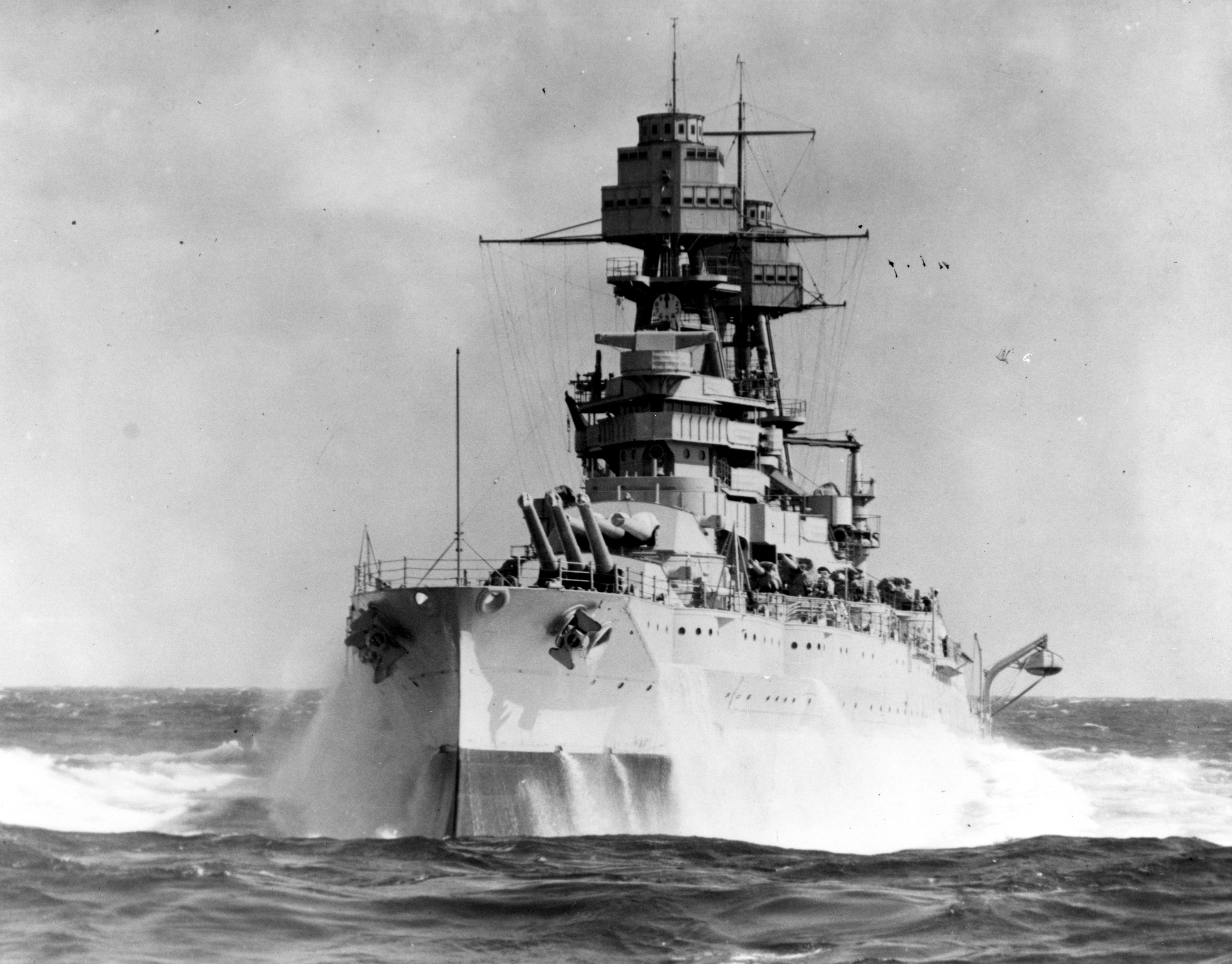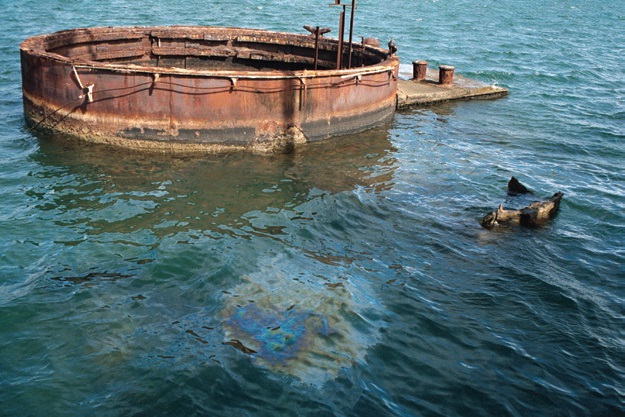Tears of the Arizona
Evan Zabawski | TLT From the Editor December 2017
A fuel oil leak adds solemnity.

The USS Arizona powering out to sea sometime in the 1930s. She would be sunk at Pearl Harbor in 1941.
Photo courtesy of Wikipedia.

For their sake, I hope the tears continue to flow for generations to come.
Photo courtesy of Wikipedia.
VISITORS TO THE USS ARIZONA MEMORIAL AT PEARL HARBOR are often fascinated by the fact that fuel oil continues to leak from the sunken ship. The iridescent plumes suggest that the ship is still “bleeding” from its wounds, and some have referred to them as “black tears” or the “tears of the Arizona.”
On Dec. 6, 1941, the day before the attack, the USS Arizona took on 4.5 million liters (1.2 million gallons) of Number 6 fuel oil, known by the Navy specification of Bunker C or simply called “Navy Heavy.” This fueling filled the ship’s 4,630-ton, 5.7-million liter (1.5 million gallon) tanks to capacity.
Shortly before 8 a.m. on Dec. 7, Japanese aircraft began their surprise attack. The Arizona’s air raid siren went off at 7:55 a.m., calling all 1,512 men to their battle stations. Within a few minutes, the first wave of attacks tallied four hits and three near misses from 10 Japanese torpedo bombers. At 8:06 a.m. the last bomb struck the ship, penetrating the forward armored deck near the ammunition magazines, setting off a catastrophic explosion seven seconds later.
A total of 1,177 officers and crewmen were killed by the bombs and subsequent explosion, amounting to nearly half of all the casualties from the attack. The explosion caused fires that burned for two-and-a-half days, consuming an estimated third of the fuel oil on board with another third estimated to have been destroyed during the attack. The remaining third has been slowly leaking out ever since.
Beginning in 1942, the Arizona’s superstructure and two of its four main gun turrets were removed. Only the barbette of one of the turrets still remains visible above water. Throughout the duration of the war, the Arizona served as a symbol and a memorial, to both soldiers and citizens alike, of the fight for freedom and for the lives lost.
In 1949 the Pacific War Memorial Commission was created to build a permanent memorial, but it was slow to action. In 1950 Admiral Arthur W. Radford, then commander of the Pacific Fleet, begin a tradition of hoisting and lowering a flag from a flagstaff placed on the wreck of the Arizona. A temporary memorial was built above the remaining portion of the deckhouse that same year. Due to budget constraints arising from the Korean War, no further funds were approved for several years.
On Dec. 7, 1955, the first permanent memorial was installed over the mid-ship deckhouse. Three years later President Dwight D. Eisenhower approved creation of a National Memorial, but legislation required a significant portion of the cost to be covered by private financing. By 1960 only $155,000 of the required $500,000 had been raised.
Colonel Tom Parker, Elvis Presley’s manager, read about the struggling campaign and saw an opportunity. Elvis had recently completed his two years of service in the army and was both pleased to begin performing again and to support a cause he so genuinely believed in. Between tickets sales and donations ($5,000 from Elvis) a total of nearly $61,000 was raised. The revived interest caused the original fundraising goal to be reached by September 1961, and construction was completed by the end of the year. The USS Arizona Memorial was officially dedicated on Memorial Day in 1962, and over the subsequent years has attracted up to 1.5 million visitors per year.
Various studies performed by the National Park Service have seen the oil leak increase from 0.95 liters per day (1 quart) in 1998 to 9 liters per day (9.5 quarts) in 2006. At these rates, the Arizona could continue leaking for hundreds of years, though it is thought that corrosion will cause a breach much sooner.
An urban legend states that the leak will stop after the last survivor passes away, and of the original 335 survivors, there are only five left at the time of this writing. For their sake, I hope the tears continue to flow for generations to come.
 Evan Zabawski, CLS, is the senior technical advisor for TestOil in Calgary, Alberta, Canada. You can reach him at ezabawski@testoil.com
Evan Zabawski, CLS, is the senior technical advisor for TestOil in Calgary, Alberta, Canada. You can reach him at ezabawski@testoil.com.